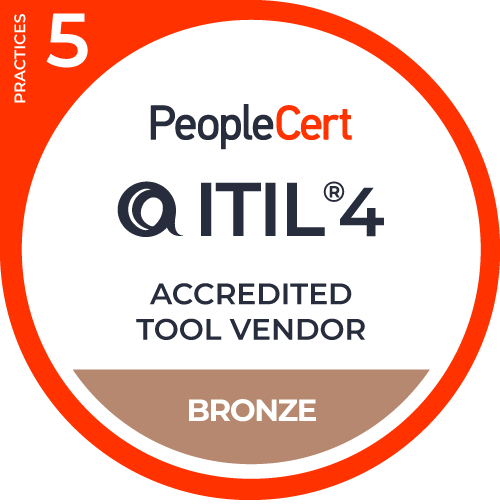Let's face it – the service desk is:
- The lowest-paid or the entry-level into IT
- The last to be trained or consulted on what is about to go live
- Rarely involved in the design of new services or fixes
- The first place a customer comes to
- The most used place a customer perceives value from your organization
Did you see the last two points? As a customer, whether I benefit from or leave you is heavily influenced by how they’re treated by the Service Desk. The customer could be staff, or it could be someone that wants to spend money with you. In either case, when they want something (done or fixed), the journey typically starts with a request via the service desk. The service desk could be a portal, email, chatbot, or other digital assistants to complicate matters further.
Value Stream Management/Mapping – an overview
Everyone has experienced inadequate services or wished that the way they worked could be improved. Many years ago, Toyota realized that the only way to get people to buy their cars was to create new ways of building and servicing them that would best any other manufacturer. Toyota knew that leaders did not understand the impact of their mandates or when staff had an issue that impacted quality or cost. Working with Edward Deming, they mapped their current way of performing a task to highlight their problems. After collaborating on what a future process should be, they coached their teams on improving their work practices and removed any obstacles they encountered. Value Stream Management (VSM) had been born!
Value Stream Management is the visualization of three activity flows:
- The way you do things (process)
- The data and tools you use or generate (information)
- The people involved and what they do at each task (work, meetings, forms, etc.)
VSM is one of the best ways for managers at any level to work together across a flow of work to:
- Learn the truth of what is happening
- Agree on a common goal against which a new way of working can be co-created
- Outline the tasks that need to occur to achieve that goal, such as the removal of meetings, forms, tight restrictions, or outdated rules
- Introducing tools that help the flow of work, such as automated approvals or manual tasks
- Most importantly, VSM has constant interaction between management and staff or vendors on how these improvements will occur and matter to them and their customers!
A VSM example: Resolution Management
The goal of resolution management is to create a flow of actions that fixes customer issues the first time and as quickly as practical. A mapping team comprised of development, security, operations, business product owner, and of course, your service desk would go through the following VSM phases in three days to no more than two weeks:
1) Map the Current tasks (keep it high-level and holistic, and map using post-it notes or a VSM tool)- Request made to fix something
- Try to fix it based on our knowledge or wiki
- Check to see if this worked
- If it didn't work, or we don't know what to do, go/pass the request to someone who can help
- They build a fixed, permanent solution or work-around
- They test that fix or work-around
- If it works, deploy it for use
- The service desk checks with the customer to see if it solved their issue
- If solved, and they’re satisfied, the issue is closed
- Add the actual time it takes to do an activity
- Add waiting time (questions, re-work, pauses)
- Add meetings, forms used, and their time to attend or complete
- Add the time elements to get the overall time and actual time of tasks
- Add tools used and data created or shared along the stream
- Add people involved, including vendors
- Look at the quality of each step in terms of completion and accuracy
- Multiply the quality of each task captured as a percentage
- Example: ask what percentage of time you go back to a previous step(s). Flow should be just one way, so each time you go backward, that task's quality is reduced. Multiplying the percentages gives you a view of when true customer quality occurs and what effort it takes to obtain that level.
3) Keep it high-level as all you want is an understanding of the current issues, so take no more than a day to do this using either post-it notes or a VSM tool
4) Map the future way of resolving issues
- Repeat the same steps of mapping the current flow, but this time, remove wasted or automated tasks.
- The future map should be against an agreed target, so if it takes you two hours to resolve a P2, try to create a future where they’re closed in 30 minutes (aggressive target)
5) The mapping team now has a new way of working, so they need to outline the things that have to occur to meet the new suggested way of resolving incidents
- How will automation occur, and who will do it?
- What new skills are required, and how will they be obtained?
- Do teams need to be involved earlier in the flow?
- Can testing of solutions or approvals of fixes be automated? Which would then get them into use faster and more safely.
- Can we remove or improve forms that need completing?
- How will we escalate issues along the flow?
- And more!
7) Share this with all of the people involved and help them to make the future better daily
8) Let them add ideas that create collaboration, empowerment, and removes silos
9) Celebrate effort as well as success.
Final thoughts
Value Stream Mapping is the process of giving you the knowledge to improve the way work is performed. It’s the responsibility of everyone working in that stream. There is no one right way of doing VSM, and you can never fail when you’re trying to improve.
Potential examples of real value stream success:
- Incidents resolved 30% faster and with an increase of 60% Right First Time with no added cost
- Customer satisfaction increased by 70% within a month
- Environments created within 10 minutes regardless of type instead of weeks
- Almost all approval meetings replaced by automated approval gates supplemented by testing
- 48% of the time of employees spent resolving issues became time they could use to create a new service
- New employees never waited more than two hours on their first day before they had all they needed to begin working (same with employees that changed roles)
- The service desk became involved at the beginning of designing resolutions or changes, as their input improved each service design's time and quality.
Try it! Get some post-it notes and some people that can make decisions about how work occurs for a customer. Map it, improve it, and keep going!



